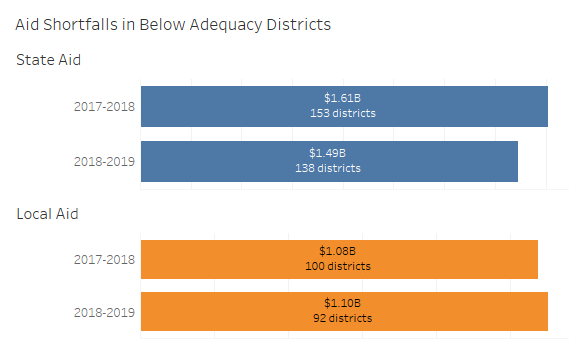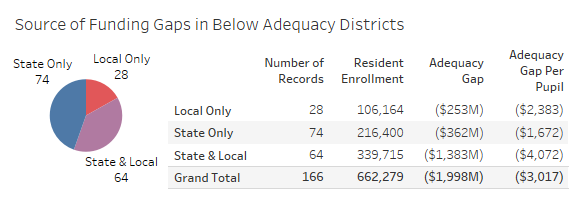AR-NEVADA NEEDS A REAL SCHOOL FUNDING FORMULA NOW, NOW MORE THAN EVER
By Mary McKillip
Education Law Center today released a report, “Nevada’s New Formula is an Opportunity Not to be Lost,” arguing that the state’s recently adopted school funding formula – the Pupil Centered Funding Plan – must be based on the actual cost of programs, staff and services needed by at-risk students, and not on the wholly insufficient dollars spent on those students in prior years.
The Nevada Legislature has charged a School Funding Commission with proposing education costs for adoption by the Legislature in the Pupil Centered Funding Plan, a new statewide “weighted student formula” intended to replace the outmoded, inadequate, 1960’s-era Nevada Plan formula.
The Nevada Plan provided no additional student-based funding for the state’s significant population of low-income students and English learners (ELs). Over the past few years, the Legislature has funded two school-based programs, called Victory and Zoom Schools, as well as additional schools through the “SB178” program. In 2017-18, 293 schools received grants from these programs for a total of $105 million. The grants reached only 71,000 students, nowhere near the 283,000 low-income students and 82,000 ELs enrolled in districts statewide.
If the $105 million in school-based grants were repurposed to fund a “weight” to provide additional funding for all low-income students and ELs statewide, the new formula would only provide $228 for each low-income and EL pupil, far below what these students need to succeed in school.

“The Commission must not base the new funding formula on the limited dollars in the old Nevada Plan,” said Amanda Morgan of Educate Nevada Now. “It is crucial the Commission not squander this once in a generation opportunity to move Nevada’s funding of public education to a formula driven by student and school need.”
The ELC report underscores the importance of grounding the new Pupil Centered Funding Plan formula in the actual cost of the additional teachers, counselors, nurses and other staff and interventions essential to give vulnerable Nevada students a meaningful opportunity to succeed. Thorough cost studies, recommending various levels of student support, have already been developed that are specific to Nevada public schools.

In the report, ELC analyzed three alternative methods available for the Commission to use in determining the weight for at-risk, low-income students and English learners in the new formula:
- At-risk funding of $1,200 per low-income student and $2,200 per English learner based on current per pupil amounts in the Zoom and Victory School programs;
- At-risk funding of $1,859 per low-income student and $3,099 per EL student, based on the “Successful Schools” model proposed in an education cost study prepared for the Legislature by the Augenblich, Palaich and Associates (APA) school finance consulting firm;
- At-risk funding of $2,771 per low-income student and $4,619 per EL based on the “Full Adequacy” model, also taken from the APA education cost study.
The ELC report also makes clear that, in light of the economic downturn caused by the COVID-19 pandemic, the Nevada Legislature may not be in a position to appropriate the increases to fully fund the at-risk weights in the new formula in the next biennium. However, a new Pupil Centered formula based on actual student need, and not on prior insufficient levels of spending, sets the stage for increasing the state’s investment in the education of all Nevada public school as the state’s economy recovers. The Commission has the perfect opportunity to lead by adopting an approach to the new formula plan that includes long-term goals and benchmarks that put the state on a path to true school funding reform.
In the short term, a new cost-based weighted formula can serve as a key mechanism to ensure the equitable distribution federal COVID-19 relief funds to school districts across the state.
“Current uncertainty around the state’s economic future may require some modifications to the pace of the phase-in, but that is no excuse to retreat on the goal of adequately funding future generations of Nevada’s most at-risk public school children, said ELC Senior Researcher Mary McKillip.”
Related Story:
Press Contact:
Sharon Krengel
Policy and Outreach Director
skrengel@edlawcenter.org
973-624-1815, x 24
Press Contact:
Sharon Krengel
Director of Policy, Strategic Partnerships and Communications
skrengel@edlawcenter.org
973-624-1815, x240